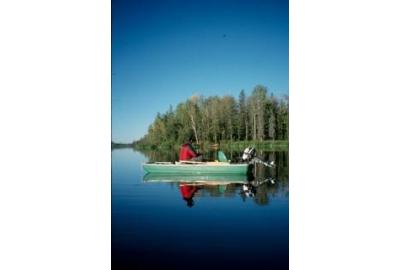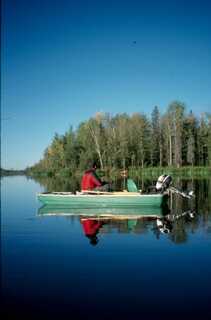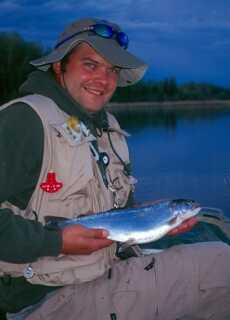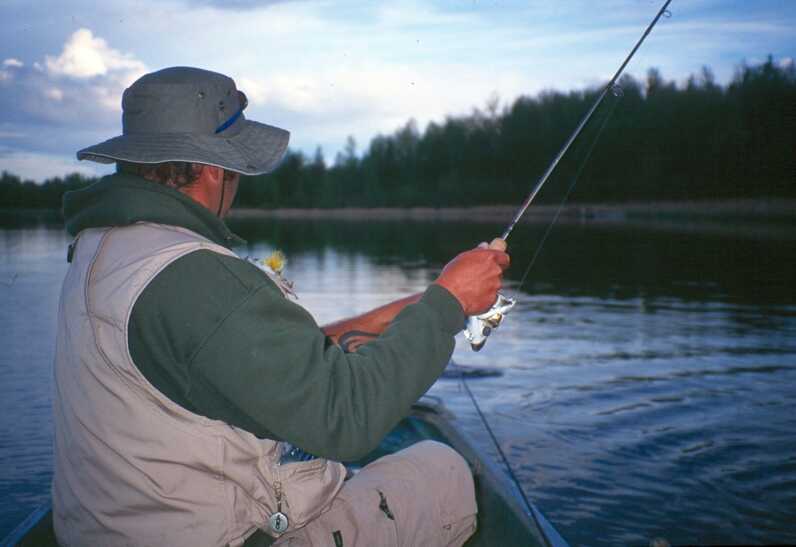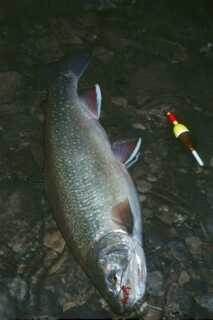The ice has come off, the lakes are opening up and I can’t wait to get on the water. While not the best time of year as far as fishing success goes, ice out is my first opportunity in five or six months to actually cast a line, perhaps even catch a fish.
The underlying theme on what it takes to get a fish to bite has everything to do with their metabolism. Fish are cold-blooded, or ectothermic, as the science gang likes to call them. That is, the surrounding water temperature directly affects their body temperature and therefore, their metabolism. When the water is cold, fish are cold and therefore they are slow and lethargic. Warmer water promotes a higher metabolism and more vigorous feeding.
To catch fish consistently at ice out I keep this in mind and I focus my efforts on two variables, location and presentation.
With location, I have one thing on my mind: temperature. Ice out water is extremely cold and, as the water warms, these warm areas become favored haunts by gamefish. When I speak of warmer water, however, it is in comparison to the rest of the water body. Even the warm’ water may be cool, but it will be noticeably warmer than the rest of the area, which is why fish will congregate there. Not all areas of a given waterbody warm up at the same rate, so when I’m out fishing I’ll hunt around to find these areas of warmer water, because when I find them I usually find fish.
Here are a few tips on finding warmer water:
All things being equal, shallow bays will warm up first, especially shallow muddy bays with dark bottom sediment as sediment will absorb and distribute heat. To take it one step further, shallow muddy bays located on the north end of the lake will warm up quicker as they are more exposed to the southern sun. This temperature swing can be significant, several degrees or more and this will often lure cold-blooded gamefish in for a nice warm water retreat.
There are a couple other areas I look for when searching for warm water. The next has to do with wind. Typically on lakes the surface water warms first and when a wind starts blowing, it will actually collect and deposit all that warm surface area to the windward shoreline. Now there will be a substantial pocket of warm water along this windy shoreline and without exception, gamefish will know about this and will be hanging around.
The last area of warm water I’ll mention has to do with creeks or rivers. The surrounding landscape warms up faster than a frozen lake. The creeks are smaller, so they melt first and warm up faster. They start flowing and deposit warm water into the lake, calling gamefish from near and far. Often times the creeks start flowing before ice out and present a great target for last ice fishing opportunities as well.
These three areas are my targets for early season fish. Now to catch fish, I’ll typically utilize two presentations that are purposefully slow to match the fish’s slow metabolism. The slip bobber is the ultimate in slow and its effectiveness is undeniable. In fact, I’ve dedicated this month’s tips column to discussing slip bobber techniques so when your done here click on the link and check it out.
The other presentation has to be the baited jig. Whether it’s a one sixteenth ounce jig tipped with a worm for trout or a quarter ounce jig tipped with a minnow for walleye, jigs catch fish. The trick is to slow things down. My buddy Aaron and I were fishing for trout at East Dollar Lake. We didn’t have much luck using active presentations so we each tipped a worm to a small jig. We anchored at the shallow edge of a visible drop off and cast the jigs out into the deep water. After they sunk all the way to the bottom slowly, every so slowly we dragged the jigs up the slope. Every few minutes one would get hammered and we’d be fighting an acrobatic rainbow or a beautiful brown. That’s all we did for the rest of that day and we caught a lot of fish.
Dragging jigs works exceptionally well for spring walleye too, but I have to keep jig size in mind. I prefer to start fishing with a quarter ounce jig tipped with a minnow for the simple fact that it’s real easy to maintain contact with both the jig and bottom. Often times, however, I’ll get bites on the quarter ounce only to see the minnow head left on my jig and the rest of the minnow eaten. If this has happened the solution is to lighten up. Take off the quarter ounce jig and move down to an eighth ounce. Now when a walleye bites, it will suck up both the jig and the minnow and the walleye will be caught.


When it comes to early spring, find the warmer water, hit it with slower presentations and enjoy the catching. The fish will certainly be there and with a little coaxing, they’ll be biting.

